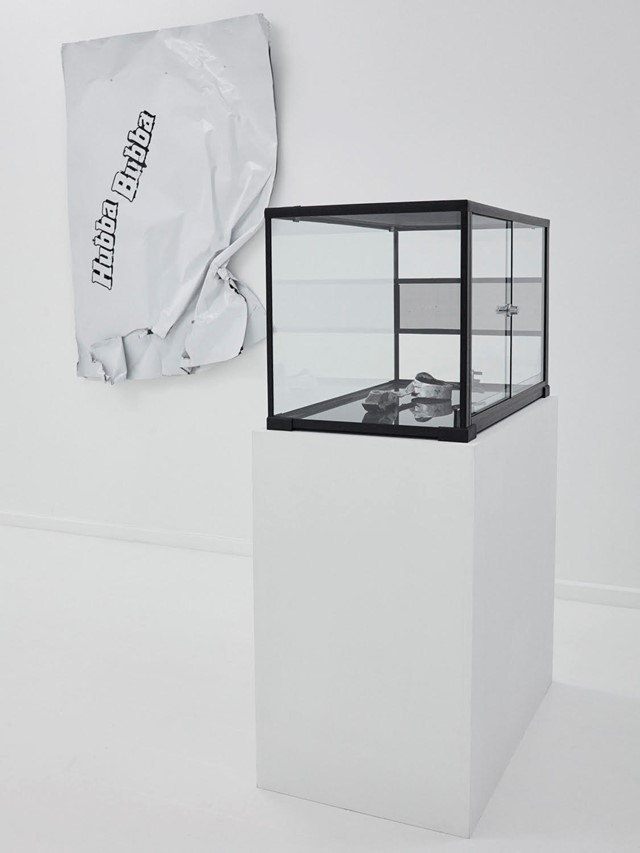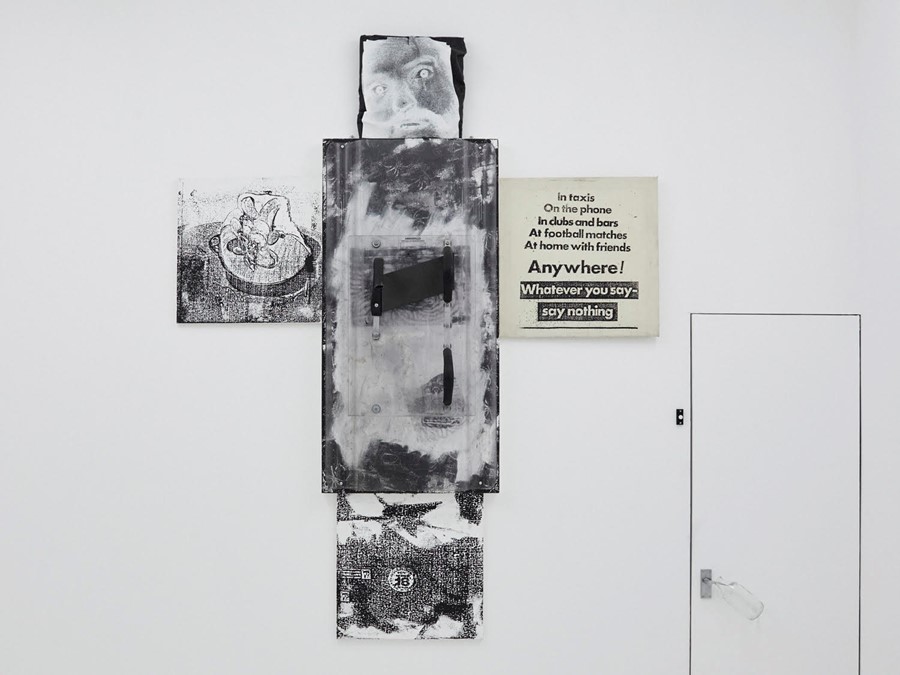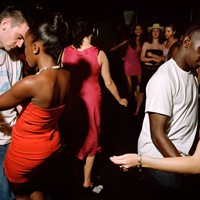Artist Kingsley Ifill wants you to destroy his work
“The theme is that there isn't one” artist Kingsley Ifill writes via email about his new exhibition, Mute, at Golborne Gallery. A follow-up to sTutter, his first solo exhibition which explored the inability to “find the words”, Ifill’s new work is about refusing to say anything at all, pressing mute in social situations, or rather, “saying less in order to say more”.
The Kent-based artist’s utilisation of junk and everyday ephemera — from glass jars to hair clippers — is a critique on artworld elitism and comes from a desire to keep things “down to earth”. Ultimately, the goal is to redraw the gap between viewer and artist: “For nearly the past four years, I've lived and worked out of an isolated town in Kent, just over 60 miles south of London. Nobody comes to visit and I spend 95% of the time alone when here,” he tells Dazed. Working in almost complete isolation affords the artist a unique take on modern conversations.
Last week, Ifill posted on Instagram that visitors can physically disrupt one of the pieces, Domestic, if they choose. See Ifill’s thought-inspiring, singular show before it closes next week, or before it’s destroyed completely.
Dazed Digital: Hi Kingsley. What does your studio look like?
Kingsley Ifill: Up until recently, my studios have been the opposite of the classic white space you see most people working from. In 2013, I built a darkroom on a building site where I taught myself to print colour photos during all nighters for about a year and a half. Thick with dust, no ventilation, tin foil used to black out the windows, it looked like a meth lab. I then moved to a space above a furniture store only accessible via a ladder leading to a hole in the ceiling Anne Frank style. Basically a brick shed but colder, nicknamed by my girlfriend at the time as “The Treehouse”. Then up until this summer, for a year I rented an ex-British Legion working men’s pub, overlooking the sea, that was waiting to be torn down. Dance-floor, pool table room, bar area, the full monty, all looking the same as it was in use, minus the alcoholics. I used the sprung wooden dance floor to print large scale paintings, the men’s toilet served as a wet room for washing down screens and what would of been the beer barrel room behind the bar was a dungeon-y looking darkroom for printing photos. Sounds like a dream but I couldn’t have been more happy when the landlord came knocking with the notice. Currently, I’m in my first white space. When I moved in a few months ago, I was suddenly confronted with everything I’d made in the last year, stacked up in a new space. It felt like moving into a fresh newly built house with ten ex-girlfriends. Completely overwhelmed by whatever energy had been absorbed into the work, I ended up putting everything into storage. Out of sight, out of mind... I wish. And that’s how I'm trying to work now. Minimally, sharing the space with just the machines and equipment needed to get to where I need to go and once something is finished, or needs a break, it leaves the room. But don't get me wrong, even now this probably makes me sound as if I'm some zen monk, I'm far from it and there’s still a comfortable amount of organised clutter.

One of your works reads “Hubba Bubba”, another reads “Thieves sell £500k work for £46”. What role does humour play in your work?
KI: It seems like there’s a serious and humorous side to most things in life, depending on how you want to look at it. There’s no reason why everything can’t be both. Maybe it’s a British thing. The constant flow of terrible jokes, making light of bad situations. Levelling the scales. Or maybe it’s working out of the town where I am, that subconsciously, I've got in mind that despite however serious the subject is that I’m dealing with, there’s the possibility that someone with no knowledge or interest in art could come in at any moment and I’d want them to be able to understand what was in front of them, even if it meant mocking and laughing at what they saw. In no way am I implying that my work is a joke or not serious, but rather that most of the time, amongst the layers, there’s a humorous or sarcastic gesture sitting there if the viewer wants to look hard enough. And maybe that's an attempt at keeping the work down to earth and not for some kind of elite few.
You’ve invited people to smash one of your artworks — why?
KI: It’s an attempt to close the gap of the relationship between viewer and artist that currently exists within the stagnant sterile environment that galleries promote to benefit themselves and the bourgeois that write the rules. The more that I'm showing work publicly, the more I’m becoming aware that art galleries fundamentally exist on the same governing principles found in politics, the military or even the church. Rules, rankings and regulations. The illusion of a hierarchy to produce profit to ensure that the control of expression is maintained by those that sit with the tip of the point stuck up their arses at the top of the pyramid. Most of it is bullshit. If art could be defined as one thing, it's the freedom to do whatever you want. With that said, Golborne Gallery is an exception to the above. It’s an artist-run space and I can't put into words how grateful I am to them for taking a risk and letting me show this work with them.
Was the idea inspired by anything, a previous stunt for example?
KI: The invitation is also somewhat influenced by Antonin Artaud’s essay “No More Masterpieces” as well as Susan Sontag’s “The Aesthetics of Silence” and “Against Interpretation”. I wonder if we are at a stage in time where we need to cut back, in order to cleanse our senses if we hope to make progress? Does what comes before us here today have any relevance? Duchamp had no solution, because he had no problem. I’ve got questions but maybe there's no answers. As Sontag stated, "As the activity of the mystic must end in a via negative, a theology of God’s absence, a craving for the cloud of unknowingness beyond knowledge and for the silence beyond speech, so art must tend toward anti-art, the elimination of the "subject" (the "object, the "image"), the substitution of chance for intention, and the pursuit of silence." Praise be to her, Amen.
‘Mute’ is on view until the 23rd December. Golborne Gallery, 72 Golborne Road, London, W10 5PS. Thursday-Saturday 11am-6pm/Sunday 12-4pm or by appointment.










